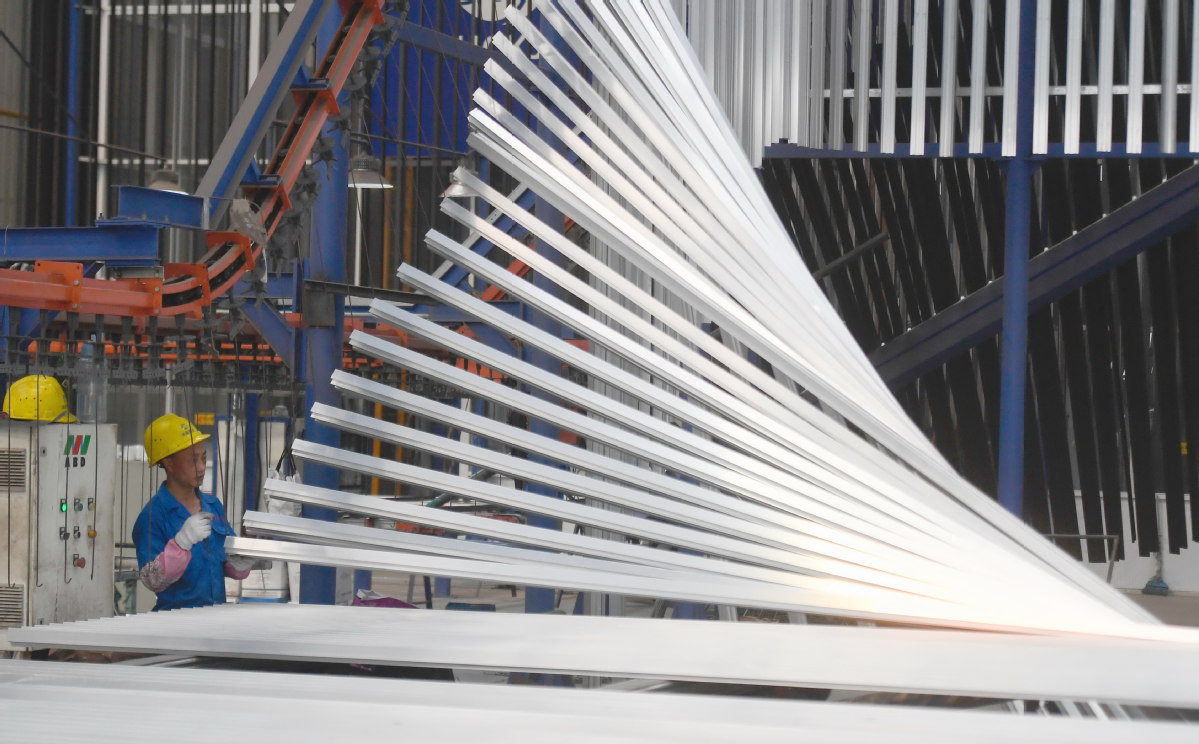'Dual circulation' policy to boost economic resilience
China's strategic focus on strengthening self-sufficiency while deepening opening-up will cement its economic resilience and provide global investors with stability despite the lingering uncertainties brought by the COVID-19 pandemic, analysts said on Sunday.
China's strategic focus on strengthening self-sufficiency while deepening opening-up will cement its economic resilience and provide global investors with stability despite the lingering uncertainties brought by the COVID-19 pandemic, analysts said on Sunday.

An employee works at an aluminium alloy plant in Wuxing district of Huzhou, Zhejiang province. [Photo/Xinhua]
Their comments were based on the country's recently strengthened commitment to establishing a "dual circulation" development pattern, in which domestic and foreign markets can boost each other, with the domestic market as the mainstay.
"Dual circulation" is widely seen as the most important policy direction after the well-known supply-side structural reform drive, and will likely serve as the policy framework of the upcoming 14th Five-Year Plan (2021-25), said Li Lin, chief economist at Beijing-based fintech conglomerate CreditEase.
The pattern focuses on fully utilizing domestic resources to empower the economy while furthering opening-up efforts, which marks a difference from the past development mode featuring rather heavy reliance on external demand and production factors, especially in natural resources and high-end technology, Li said.
At a symposium with entrepreneurs in July, President Xi Jinping explained the consideration behind the proposed new pattern: In the face of an external environment characterized by rising protectionism, a global economic downturn, and a shrinking international market, China must give full play to the advantages of its huge domestic market to boost its economy and the global recovery.
Efforts should be made to elevate the modernization level of the industrial and supply chains, promote scientific and technological innovation, and speed up breakthroughs in core technologies, Xi said.
Cheng Shi, chief economist at corporate financing platform ICBC International, said the "dual circulation" development pattern will help the Chinese economy better defend itself against protracted external uncertainties.
"The focus on improving domestic economic circulation will make China's development less confined to unstable external factors, but remain deeply blended with and benefit from international economic exchanges," Cheng said.
On the one hand, by attaching greater importance to expanding domestic demand and addressing weak links in the supply system, the "dual circulation" pattern will make China's economy less dependent on external factors, he said.
On the other, the country will continue its opening-up efforts and diversify its trade partners based on a win-win mindset, making its external economic circulation less vulnerable to protectionist measures from one or two countries, he said.
China's more resilient economy under the "dual circulation" pattern will help the nation's equities better withstand volatility in overseas markets, analysts said, attracting global investors seeking relatively stable returns.
"Uncertainty does remain elevated amid the COVID-19 pandemic and casts a cloud over Chinese equities, but the long-term trend of global investment flowing into the Chinese market will not change, given its steady economic prospects under the dual circulation pattern," said Cheng.
Since this month, investors in the Chinese mainland stock market started to sell expensive tech shares to capture the rally in undervalued cyclicals-stocks most affected by macroeconomic or systematic changes in the overall economy.
But analysts said the correction could have signaled mid-to long-term buying opportunities. As China steps up efforts to strengthen self-sufficiency, domestic brands engaged in technological innovation should see faster growth and lead the market uptrend, they said, adding that the consumption upgrading and financial sectors are also expected to benefit.
"For many industrial and tech sectors, this (the dual circulation pattern) means more onshore sourcing, onshore substitutes as backups or import substitution," said Wendy Liu, head of China Strategy at UBS Investment Bank.
Zhang Xia, chief strategist at China Merchants Securities, said that the market value of the high-end automation sector in the A-share market could see a 10-fold increase over the next decade as leading domestic companies stand out and become more capable in competing with foreign giants.

